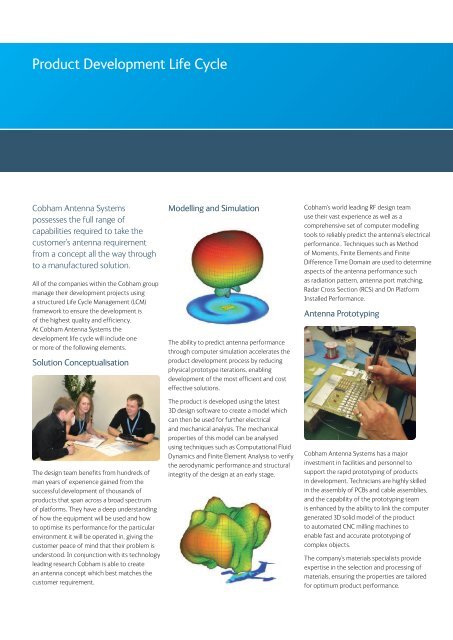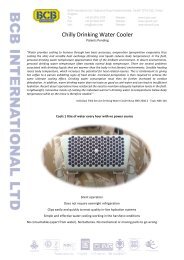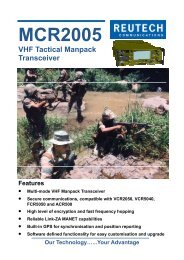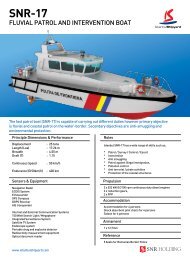Cobham Antenna Systems
Cobham Antenna Systems
Cobham Antenna Systems
You also want an ePaper? Increase the reach of your titles
YUMPU automatically turns print PDFs into web optimized ePapers that Google loves.
Product Development Life Cycle<br />
<strong>Cobham</strong> <strong>Antenna</strong> <strong>Systems</strong><br />
possesses the full range of<br />
capabilities required to take the<br />
customer’s antenna requirement<br />
from a concept all the way through<br />
to a manufactured solution.<br />
All of the companies within the <strong>Cobham</strong> group<br />
manage their development projects using<br />
a structured Life Cycle Management (LCM)<br />
framework to ensure the development is<br />
of the highest quality and efficiency.<br />
At <strong>Cobham</strong> <strong>Antenna</strong> <strong>Systems</strong> the<br />
development life cycle will include one<br />
or more of the following elements.<br />
Solution Conceptualisation<br />
The design team benefits from hundreds of<br />
man years of experience gained from the<br />
successful development of thousands of<br />
products that span across a broad spectrum<br />
of platforms. They have a deep understanding<br />
of how the equipment will be used and how<br />
to optimise its performance for the particular<br />
environment it will be operated in, giving the<br />
customer peace of mind that their problem is<br />
understood. In conjunction with its technology<br />
leading research <strong>Cobham</strong> is able to create<br />
an antenna concept which best matches the<br />
customer requirement.<br />
Modelling and Simulation<br />
The ability to predict antenna performance<br />
through computer simulation accelerates the<br />
product development process by reducing<br />
physical prototype iterations, enabling<br />
development of the most efficient and cost<br />
effective solutions.<br />
The product is developed using the latest<br />
3D design software to create a model which<br />
can then be used for further electrical<br />
and mechanical analysis. The mechanical<br />
properties of this model can be analysed<br />
using techniques such as Computational Fluid<br />
Dynamics and Finite Element Analysis to verify<br />
the aerodynamic performance and structural<br />
integrity of the design at an early stage.<br />
<strong>Cobham</strong>’s world leading RF design team<br />
use their vast experience as well as a<br />
comprehensive set of computer modelling<br />
tools to reliably predict the antenna’s electrical<br />
performance.. Techniques such as Method<br />
of Moments, Finite Elements and Finite<br />
Difference Time Domain are used to determine<br />
aspects of the antenna performance such<br />
as radiation pattern, antenna port matching,<br />
Radar Cross Section (RCS) and On Platform<br />
Installed Performance.<br />
<strong>Antenna</strong> Prototyping<br />
<strong>Cobham</strong> <strong>Antenna</strong> <strong>Systems</strong> has a major<br />
investment in facilities and personnel to<br />
support the rapid prototyping of products<br />
in development. Technicians are highly skilled<br />
in the assembly of PCBs and cable assemblies,<br />
and the capability of the prototyping team<br />
is enhanced by the ability to link the computer<br />
generated 3D solid model of the product<br />
to automated CNC milling machines to<br />
enable fast and accurate prototyping of<br />
complex objects.<br />
The company’s materials specialists provide<br />
expertise in the selection and processing of<br />
materials, ensuring the properties are tailored<br />
for optimum product performance.

















